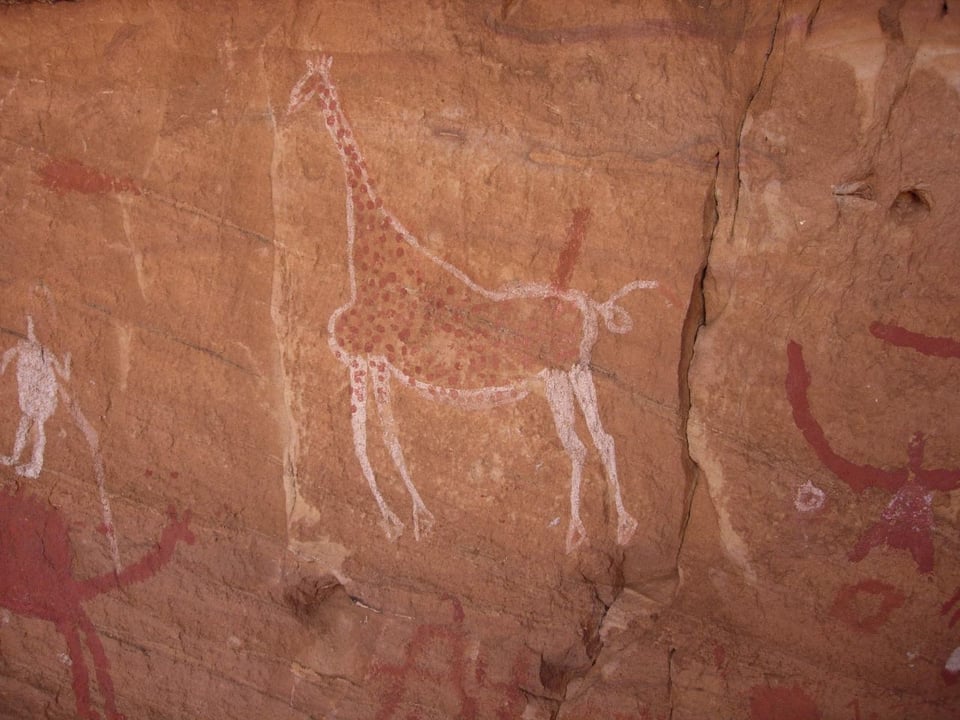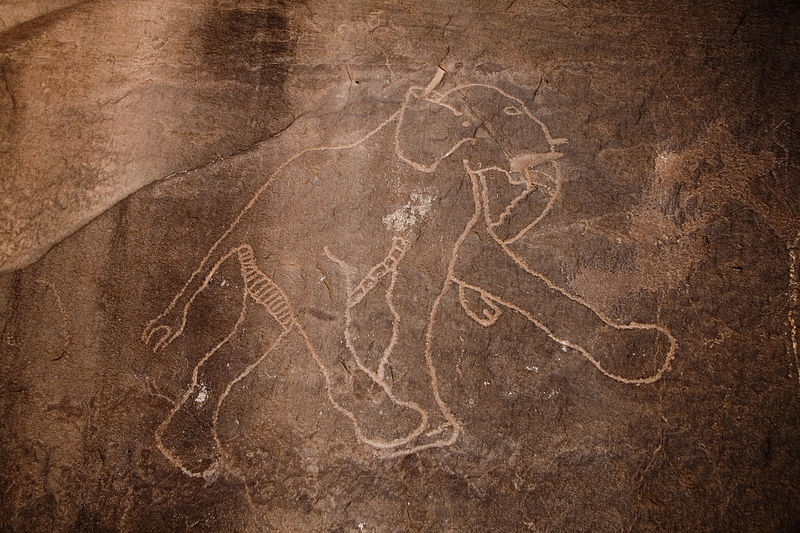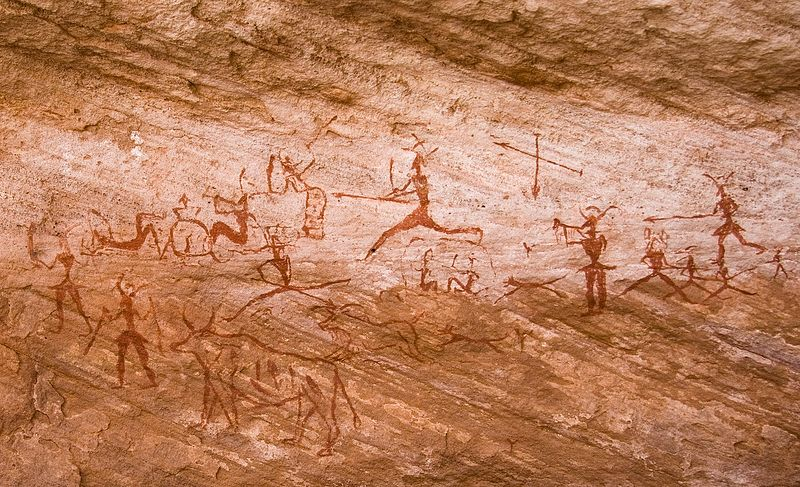A Long Time Ago... #4
Hello there.
Welcome to the fourth of these posts exploring art, fiction and history. Every other Sunday I'll be sharing some insights into my two major passions - Star Wars and history, or specifically, ancient art.
Art as a means of representation, observation and meaning, has survived tens of thousands of years, expressed now in a mesmerising multitude of ways. I'm fascinated by its origins, and a particular subgenre of art known as the Star Wars franchise.
At the moment, I’m expressing and sharing this fascination by taking you through my timeline-ordered shelves of Star Wars books, as well as the ancient art sites that inspire(d) my writing.
This is a shorter one on the Star Wars side (it’ll balance out the long one for May 5th!), as I’m away as this is going out, hopefully enjoying the sun and history in the South of France! Anyway…
In A Galaxy Far, Far Away…

We’re well into the reign on the Empire now, about halfway through the nineteen-year in-universe gap between George Lucas’s two film trilogies, between Episode III: Revenge of the Sith and Episode IV: A New Hope. A New Dawn, part of The Rise of the Empire on the left, that I covered last time, takes place more so at this time.
Most Wanted by Rae Carson introduces us to a young Han Solo, when he was a street urchin on the industrial planet Corellia. It’s a fun crime story, mainly setting up Han’s relationship with Qi’ra, a fellow White Worms gang member. The two of them start as rivals but by the end of the story they’re set up for the events of Solo the film. In fact it leads very nicely into the novelisation of the film, but to fill the little time gap and to give a breather from Han and Qi’ra action, I’ve inserted the next book.
Lando’s Luck by Justina Ireland is another recent addition to my shelf, but I’m sure it does the similar great job of the above book and gives us a look at young Lando Calrissian (and his droid L3-37) before he and Han cross paths in Solo. It’s also part of the cross-media Flight of the Falcon event, tracing the Millennium Falcon’s journey across the timeline. I have the tie-in comic, but not all the junior novels. I plan to read them all in one go soon!
The Solo: A Star Wars Story novelisation does what it says on the tin, but like all Star Wars film novelisations, it does so much more. Its extra subtitle of Expanded Edition is a bit of a giveaway to the depth Mur Lafferty’s novel covers compared to the film. The benefits of the written medium allowed Lafferty to fill in some gaps, as the film does take place over a few years, and tie into more Star Wars content.
But speaking of the film taking place over a few years, while the novelisation does the same job as some comics in giving us Han’s time in the Imperial Navy between the start and main portion of the film, Crimson Climb, a novel I have yet to add to the collection, follows Qi’ra’s journey. I won’t spoil Solo just in case, but the character is revealed to have gone through quite a transformation, and has gone on to live up to that role in many recent comics. This is the story of how she made that climb! Since it takes place within the film, I’m putting E.K. Johnston’s book here in timeline order. Readers of previous editions of A Long Time Ago… will have seen that name a lot already, and I’m sure this novel will match her other exemplary work focussing on Star Wars heroines.
Again, I’ve yet to get to Cavan Scott’s second Choose Your Destiny book, A Han & Chewie Adventure (it was one of a few on the shelf I received for Christmas). Like I said before, though, I know this multiple choice book’ll be good, following the classic duo after their meeting in Solo, kind of like an epilogue to this period of books.
But there is another. I don’t have it yet, but Jedi: Battle Scars by Sam Maggs is a tie-in to the brilliant Jedi video game series. It follows the main characters between the two games released so far, a different Padawan Order 66-survivor story that’s definitely worth your time. The book takes place around the same time as the Solo-related books, but for the sake of the best reading experience, I’ve put this story at the end of this section.
In Tadrart Acacus, Ghat District, Libya…
This site is more a collection of sites around the Acacus mountains, a large plateau by the Algeria border, over which there’s even more art.
The desert landscape is amazing, seas of different coloured dunes, rocky towers and arches, ancient ravines, but this Sahara was once savannah, as evidenced by its ancient art.

Above is one of many giraffe-depictions from this region. In fact there’s tens of thousands of etchings, as well as some paintings, of different styles from over 10,000 years ago up until 100 CE, as well as modern marks.
In caves or on exposed rock, people recorded what was going on around them, inadvertently making a visual timeline of this region’s history, recording the mobility of people in and out of this fluctuating landscape, as well as the domestication of different animals in times of more humidity. They provide evidence of humanity’s journey from hunting to pastoralism.
There’s giraffes, ostriches, crocodiles, gazelles, antelope, elephants, rhinos, hippos, sheep, dogs, oxen, horses, camels, animals from a variety of ages and even some hybrid creatures that look like fighting cat/monkeys. Crocodiles and hippos especially tell us how much wetter the Sahara was then.
Here’s one of the many large engravings from the area:

The sand timer had been paused by the artists of this landscape, as they gave their archaic, round-headed, bovidian and pastoral, horse- and camel-age visions life. Dreams are timeless. Now, the withheld grains must fall, a new golden age coming to this life-bound globe.
A poetic but also literal quote from my fictionalised short interlude about the site, from my WIP novel. I remember researching about those ages of desert art, measured by which animals the local people relied on, so I included it there and here. Here’s an example of a hunting scene of some sort with some cattle.

Sadly, many of the painted scenes like the one above have been targeted by graffiti in the last twenty years, whether the usual carved initials or whole spray-painted words. Some people purposefully destroyed parts of the heritage site with chemicals to remove the paint. Which is pretty sad.
And despite the efforts of misguided humans in the years before the shadow pod came, the art became life, figures emerging from behind spray paint, or from beside the lifeless graffiti of the modern age, a language so much more developed and yet primitive compared to the simple symbols, geometric patterns, universal shapes in the minds of the world’s earlier artists.
There’s a bit of out of context stuff in the quote above. Maybe some of you dedicated readers will know what a ‘shadow pod’ is, and how it could possibly relate to these ancient art vignettes. Maybe not!
That brings us to an end of this exploration of a long time ago. I hope you enjoyed! Any feedback would be much appreciated. I really relish in being able to sit down and write about these two facets of my reading/writing life; they come quite easily - I guess that’s what makes them passions.
Thank you very much for reading,
Harvey
